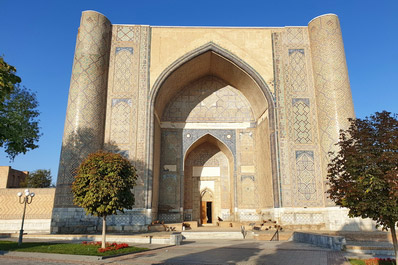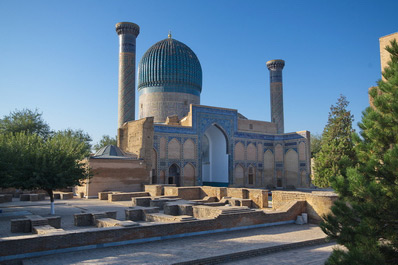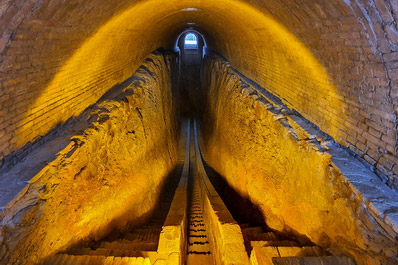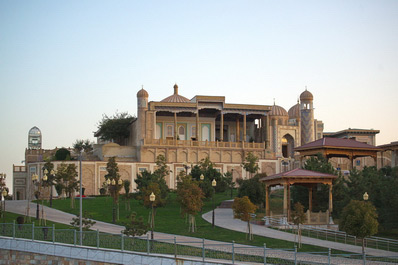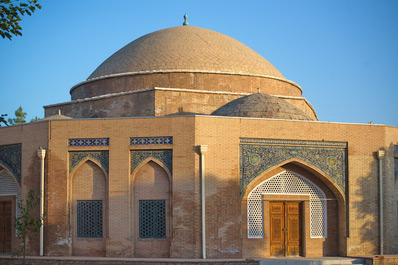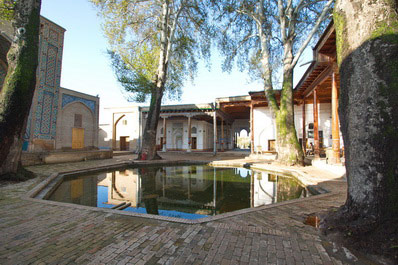Monuments of Samarkand
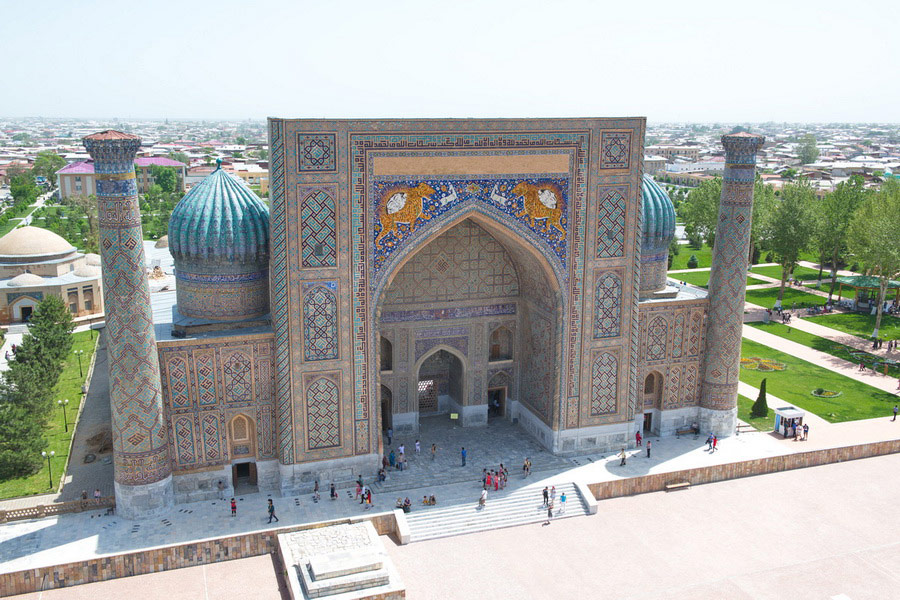
Samarkand is one of the oldest cities in the world and a major trading hub on the Great Silk Road. Founded more than 2,700 years ago, it became a cultural crossroads where merchants, scientists, artisans, and travelers from around the world gathered. Persian, Turkic, Arabic, and Chinese traditions mingled here, establishing Samarkand as a center of trade, knowledge, science, and art. The city's architecture, with its magnificent madrasahs, mosques and mausoleums, still reflects this illustrious history. We invite you on a captivating journey to explore Samarkand's iconic sights that embody Uzbekistan's rich cultural heritage.
Samarkand Sights
Registan Square: The heart of Samarkand and a symbol of Uzbekistan, Registan Square began as a marketplace and meeting ground, later transforming into a cultural center with the construction of three grand madrassahs: Ulugbek, Sherdor, and Tillya-Kari.
Gur-Emir Mausoleum: The final resting place of the great conqueror Tamerlane (Amir Timur), Gur-Emir is a grandiose structure, its stunning exterior and elaborate interior decoration honoring not only Tamerlane but also his sons, grandsons, and advisors.
Bibi-Khanum Mosque: Built on Tamerlane’s orders in the late 14th century, this mosque was constructed in honor of his favorite wife, the beautiful Bibi-Khanum, and became the largest mosque in Central Asia.
Shahi-Zinda Necropolis: A complex of mausoleums housing Samarkand’s noble and spiritual figures. Originating in the 11th century near the tomb of Kusama ibn Abbas, Prophet Muhammad’s cousin, Shahi-Zinda stands as an architectural masterpiece of medieval Uzbekistan.
Ulugbek Observatory: A museum complex on the site of an ancient observatory built by Tamerlane’s grandson, Ulugbek, in the 15th century. The observatory houses rare artifacts, including part of an ancient sextant Ulugbek used to chart the stars.
Mausoleum of St. Daniel: A sacred site revered in Islam, Christianity, and Judaism, said to contain relics of the prophet Daniel. According to legend, his tomb stretches nearly 18 meters, and the nearby spring is believed to have healing properties.
Afrasiab: These ancient ruins mark Samarkand’s origins over 2,700 years ago, a thriving city center before the Mongol invasion led to its abandonment. The Samarkand Historical Museum nearby holds a rich collection of artifacts unearthed from Afrasiab.
Siab Bazaar: Samarkand’s largest bazaar, Siab offers a colorful array of Eastern sweets, spices, nuts, fresh produce, and the famed Samarkand flatbread, “non.” Experience the bustling atmosphere and traditional bargaining in this lively market.
Khujum Silk Carpet Factory: Known for exquisite handwoven carpets made from natural silk, Khujum offers visitors an up-close look at the process of creating these treasured pieces of Uzbek craftsmanship.
Khovrenko Winery: One of Uzbekistan’s oldest wineries, Khovrenko has produced premium wines, brandies, and liqueurs for over 150 years. The on-site Museum of Winemaking houses historical artifacts, and guests are welcome to sample some of the winery’s finest offerings.
Hazrat Khizr Mosque: This pilgrimage site dedicated to Saint Khizr, a mythical protector of travelers, features unique architecture with vibrant balcony and facade decoration. The mausoleum of Uzbekistan’s first president, Islam Karimov, is also located here.
Chorsu Art Gallery: A center of contemporary culture housed in a historic trade dome, Chorsu hosts exhibitions, workshops, and showcases works by Uzbek artists, making it an engaging stop for art enthusiasts.
Rukhabad Mausoleum: Built in 1380 at Tamerlane’s request, this mausoleum honors Saint Burhaneddin Sagardzhi, a venerated theologian of the Timurid era, in a display of simplicity and respect for spiritual legacy.
Ak-Saray Mausoleum: This 15th-century tomb houses descendants of the Timurid dynasty. Though its exterior is modest, the interior is resplendent with glazed tiles and intricate golden ornaments, creating a striking contrast.
Khoja-Ahrar Ensemble: Built by Khoja-Ahrar, a statesman and Sufi theologian, this complex includes a madrassah, mosques, a minaret, and an iwan, set amidst stately plane trees dating back 500 years.
Ishratkhana Mausoleum: This mausoleum, originally built in the 15th century for Abu Said’s daughter, is now a ruin but retains fragments of its once-magnificent tile work.
Abdi-Darun Mausoleum: This complex dating back to the 12th century honors Khoja Abdi-Darun, a renowned Islamic scholar. The site includes a mosque, khanaka, madrasah, minaret, and a pond.
Sights in the Vicinity of Samarkand
Al-Bukhari Mausoleum: An architectural complex dedicated to Imam al-Bukhari, a distinguished Islamic scholar. It includes a tomb, a mosque, and a museum with artifacts related to his work.
Meros Paper Factory: This factory in Konigil Village revives the ancient art of making Samarkand paper, renowned for its durability. The factory is a popular attraction where visitors can witness the entire papermaking process.
Demon Plateau: An intriguing natural site with oddly-shaped boulders scattered across grassy plains, allowing visitors to let their imaginations run wild with shapes like “heart stone” and “devil’s helmet”.
Hazrat Daud’s Cave: A sacred grotto revered across faiths, located on a mountain requiring a 1,300-step ascent symbolizing purification. The cave is set in a scenic area, appealing to both pilgrims and nature lovers.


